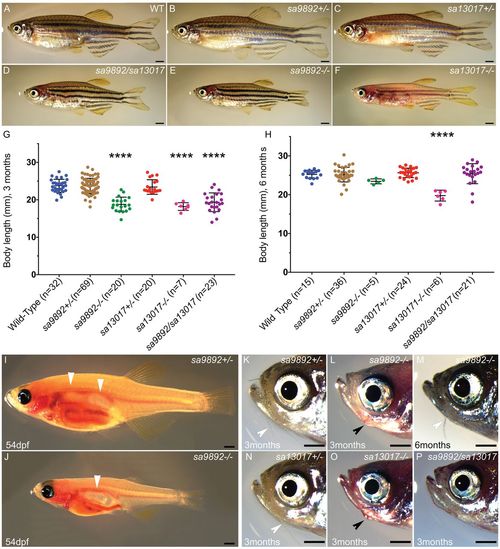Fig. 2
- ID
- ZDB-FIG-190626-49
- Publication
- Chopra et al., 2019 - Zebrafish duox mutations provide a model for human congenital hypothyroidism
- Other Figures
- All Figure Page
- Back to All Figure Page
|
duox mutants exhibit growth retardation. Mutants for both alleles as well as compound heterozygotes are shorter than their WT and heterozygous siblings at 3 months (A–G) but catch up by 6 months (H). sa13017−/− animals are trailing behind even at 6 months (H). Asterisks in G denote statistically significant differences (Bonferroni's multiple comparisons test, ****P<0.0001) duox mutants also have a delay in the inflation of the anterior lobe of the swim bladder (I,J) (white arrowheads indicate lobes). Adults at 3 months old also lack barbels (L–P), which are observed in heterozygous siblings (white arrowheads; K,N). Barbels emerge in some older animals (6 months and older) (white arrowhead, M). External goitres are often visible in young adults (black arrowheads; L,O). Scale bars: 1 mm. |
| Fish: | |
|---|---|
| Observed In: | |
| Stage Range: | Days 45-89 to Adult |

